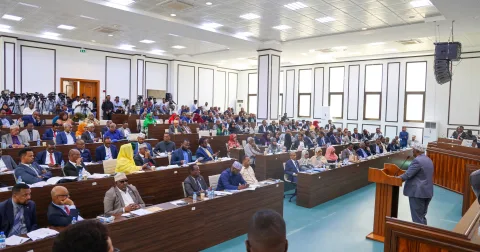Somalia on Wednesday joined the Commission for Controlling the Desert Locust in the Central Region of…
Somalia on Wednesday joined the Commission for Controlling the Desert Locust in the Central Region of the United Nations Food and Agriculture Organization (FAO) as its 17th member.

FAO said Somalia has made great progress since 2020 to build the national institutional and technical capacity for locust control with support from the UN food agency and partners.
Shoki AlDobai, team leader for FAO’s Locusts and other Transboundary Plant Pests and Diseases, said Somalia is a key breeding country for locusts, and having it in the Commission will benefit not only Somalia but neighboring countries as well by reinforcing the monitoring and early warning in the region.
“We are proud to welcome Somalia to the Commission. This is an important milestone to integrate Somalia in this regional coordination body,” AlDobai said in a statement.
He said having the country under the umbrella of the Commission will sustain the level of preparedness and achievements made in the past years.
According to FAO, Somalia’s geographical location, historical significance in locust control, and contributions to the Commission make it a crucial player in combating locusts in the Horn of Africa. It said the country’s membership in the Commission is a strategic step that will help improve locust control efforts in the region.
Ahmed Madobe Nunow, minister of Agriculture and Irrigation of Somalia, said the government is committed to working with the other member states of the Commission to control the desert locust in the Central Region and to mitigate the devastating effects of this pest on Somalia’s agriculture and food security.
“Somalia is pleased to become a State Party to this important agreement for the establishment of this Commission,” Madobe said.
The Commission for Controlling the Desert Locust in the Central Region offers a collaborative approach to strengthening the cooperation and coordination between member states by supporting the strategy of prevention to detect early signs of locust populations and provide rapid intervention to eliminate locust infestations before they can cause damage to crops.





